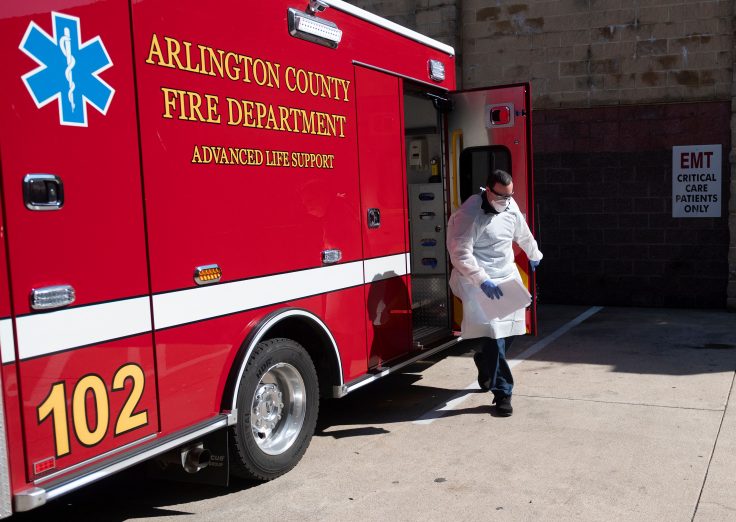Over $50 billion in coronavirus relief meant for health care providers remains unspent, even as some in the industry say they have gotten just a fraction of what they need to cover pandemic-related losses.
The Department of Health and Human Services has distributed roughly 70 percent of the $175 billion appropriated by Congress to relieve health care providers of economic strain imposed by the coronavirus pandemic. HHS maintains that it is distributing funds in a way that is "fast, fair, transparent and simple," a spokesperson told the Washington Free Beacon.
But some providers say the money isn't being doled out fast enough, especially in proportion to the added strain they face thanks to higher demand and onerous safety requirements. An ambulance industry group estimated they have received just one tenth of what they need to cover losses.
"As an ambulance provider, I have been going 24/7 since March 15th, nonstop," Jamie Pafford-Gresham, CEO of Pafford Medical Services, told the Free Beacon. "I do not believe that it's been intentional that the ambulance provider has been left out. What I do believe is that nobody realizes we are, and how vital our services are to the hospital associations and pandemic itself."
Though the fund is just a fraction of the estimated $4 trillion Congress has appropriated since March, the economic downturn has struck health care providers like Pafford-Gresham particularly hard, with unemployment remaining elevated above pre-crisis levels—suggesting that HHS's slowness could be exacerbating the crisis. At the same time, the slow pace of its distribution raises the question of whether or not taxpayers needed to foot that particular bill, given tremendous levels of spending on the crisis.
Appropriating legislation, passed by Congress early in the crisis, gave HHS broad leeway in deciding how to dish out $175 billion in funds. It has offered cash both generally and to specifically struggling businesses.
The general distribution, totaling roughly $68 billion, was offered to providers who bill Medicare in order to address "both the economic harm, and additional expenses caused by COVID-19," the HHS spokesperson said. HHS has distributed an additional $55.9 billion for "targeted" needs such as "high impact area funding, nursing home funding and funding to tribal communities hardest hit by the virus—to name a few."
But while money has been flowing, not everyone thinks they've gotten what they need. A report shared with the Free Beacon from the American Ambulance Association estimated that member groups lost almost $44,000 per ambulance between March 1 and June 30, for a total estimated shortfall of $2.89 billion. By comparison, the AAA estimates that its members have received somewhere between $270 and $500 million, just a tenth of total need.
"HHS asked for leeway when they were getting money from Congress to pay it out as they see fit, and they have yet to see fit to the ambulance providers," Pafford-Gresham said.
The HHS spokesperson said the department's distribution is ongoing and that it will "continue to maintain an open line of communication with providers as well as congressional, state, and local leaders to ensure as many providers as possible receive funding in these difficult times." A Senate health care staffer told the Free Beacon that the department is trying to balance the urgency of the situation with effectively and responsibly directing money, especially given the wide latitude it was granted by Congress.
That caution differentiates the provider relief fund from other major coronavirus appropriations. The widely popular Paycheck Protection Program, for example, poured half-a-trillion dollars into the economy in a matter of months, resulting in a handful of fraudulent applications being approved.
The health care industry has, perhaps counterintuitively, been particularly hard hit by the coronavirus-driven downturn, as profitable procedures like elective surgery were put on hold by providers and patients alike.
Amid March's spike in unemployment, health care saw more jobs lost than almost any other sector of the economy. As of August, health care sector unemployment was still at 5.4 percent, higher than the past eight years and more than twice the rate in February 2020.
U.S. taxpayers, meanwhile, have yet to feel the burden of the added coronavirus relief spending. The nonpartisan Congressional Budget Office earlier this month projected that the U.S. federal debt will exceed GDP in 2022 and 2023, exceeding the records previously set during World War II.
